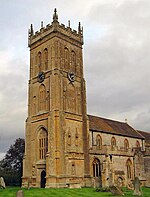Coke Memorial Methodist Church
Churches completed in 1882Grade II listed churches in SomersetInfobox religious building with unknown affiliationMethodist churches in Somerset

Coke Memorial Methodist Church is a former Methodist church in South Petherton, Somerset, England. Designed by Alexander Lauder, it was built in 1881-82 and has been a Grade II listed building since 1988. It closed as a place of worship in 2023.
Excerpt from the Wikipedia article Coke Memorial Methodist Church (License: CC BY-SA 3.0, Authors, Images).Coke Memorial Methodist Church
North Street,
Geographical coordinates (GPS) Address External links Nearby Places Show on map
Geographical coordinates (GPS)
| Latitude | Longitude |
|---|---|
| N 50.9501 ° | E -2.8103 ° |
Address
Coke Memorial Methodist Church
North Street
TA13 5XY
England, United Kingdom
Open on Google Maps










